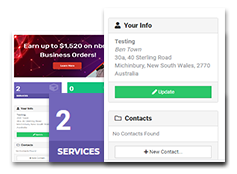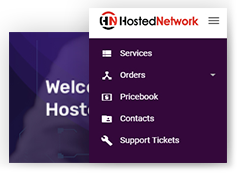How would you know that your MSP is truly growing? What are the factors that steer your business? While we understand that fulfilling the needs of your clients is your MSP’s top priority, you might be losing track of other important components of your business. Aside from the customers which obviously is the main driver for growth, you might be missing out on other internal metrics that are also crucial for your MSP’s success.
Here’s a few vital metrics that your MSP should start measuring and analysing:
1. Profit per Account
Each of your clients brings in a different level of value in your revenue stream. Looking closely at your accounts will help you determine which one gives you the highest and the lowest profit. In this way, you can strategise on how to nurture each of your accounts.
You can then answer questions such as:
- Which products to cross sell/upsell to a particular customer?
- Which customer takes so much of your time and effort but gives so little profit?
- What pricing strategy works?
2. Monthly Recurring Revenue (MRR)
Based on the name, MRR is the expected revenue your MSP acquires per month. Once you have determined the MRR for each account, you can calculate the MRR for your MSP.
When measured consistently, your MRR can help you determine your future plans such as scaling, business improvement, etc.
MRR= Average Revenue per Account + Total Accounts That Month
3. Overheads
Your overhead is the amount you spend in operating your business. These costs are not directly related in creating a product or providing your solutions. The cost of acquiring the new licenses and equipment for your customer is not included in your overhead but the wages for the employees involved in assisting this customer are considered as overhead.
Overheads = Fixed costs + Variable costs
Fixed overhead costs are predictable expenses that you pay regularly regardless of any activity in your operations. Some of your fixed overheads are the rent of the office, salaries of your MSP’s staff, property taxes, equipment depreciation, etc.
Variable overhead costs on the other hand are the expenses that vary depending on the level of your operations. Examples include your hardware and software supplies, travel allowances, trainings, etc.
Whether you’re a start-up MSP or a well-established one, measuring your overheads and analysing its movement against your profit margin will give you a clear view on your financial MSP’s financial stability. If you’ve noticed that you bring in insufficient profit to make up to your overheads, then it’s time to recheck your budgeting plans and pricing strategies.
4. Resource Utilisation
Your MSP’s resource utilisation keeps track of how effective you are in optimising time. To measure this, you need to determine the billable or real-time hours your employees spend against the agreement.
Monitoring individual utilisation will enable you to help your low-performing staff by addressing their pain points and resonate the best practices from your employees who are performing well.
5. SLA Compliance
Simply put, this indicates your MSP’s proficiency in meeting your client’s SLA requirements. Knowing your MSP’s SLA performance can help you determine if your benchmark is a bit low or high for the capability of your business. Measuring this also enables your MSP to know the processes that work or not.
6. Earning before interest, taxes, depreciation and amortisation (EBIDTA)
EBIDTA determines the overall value of your business. As calculating EBIDTA varies from one company to another, here are some formulas you can try to compute it:
EBITDA = Net Income + Interest + Taxes + Depreciation + Amortization
EBITDA = Operating Profit + Depreciation + Amortisation
Consistently measuring your MSP’s EBIDTA lets you be prepared and plan ahead in coming up with ways on how to improve organisational efficiency and overall profitability.
Additionally, investors check EBIDTA to assess a company whose profit is continuously sinking.
7. Customer Lifeline Value (CLV)
CLV is a metric that calculates how much your MSP can earn from a customer over the period of your relationship. To be consistently profitable, you should come up with effective techniques on how to increase the CLV of your customers.
Having a clear grasp of your CLV enables you to fine-tune the pricing and packaging strategies for each of your customers and eventually boost your MSP’s profitability. Some examples are shifting billing cycles from monthly to semi-annual or annual, or providing more value to your existing bundles by adding disaster recovery or cyber security solutions.
8. Managed Services Contract Profitability
Are you making the right profit from your contracts? While you are focused on providing services to your customers, you might be missing out on monitoring your managed services agreement.
For your MSP to be constantly profitable, first, you should be able to keep track of the billable hours you spent working for your customers. Investing on a professional services automation (PSA) software can help your MSP monitor this efficiently. If subscribing to a PSA is not yet possible for the budget of your start-up MSP yet, free spreadsheets applications can do the job.
Second, make sure that your pricing models are profitable and caters to the requirements of your customers at the same time. Low prices don’t guarantee more revenue. Instead, focus more on value and how you can effectively position your solutions and justify its worth to your customers.
Lastly, commit to your SLAs. Set feasible deadlines and be proactive in addressing issues on time.
As the saying goes, “If you can’t measure it, you can’t improve it.” Instead of creating baseless theories on the factors that are lagging your MSP behind, start measuring each of the factors above to finally be informed of the areas that you need to improve.
To help you be organised and efficient in tracking and measuring these metrics, you can take a look and try different data and KPI visualisation tools like Brightgauge or Microsoft Power BI.
 Contact us
Contact us  Partner Login
Partner Login  Service Status
Service Status 


 September 09, 2021
September 09, 2021
 Madeleane Abejero
Madeleane Abejero
 3 mins
3 mins